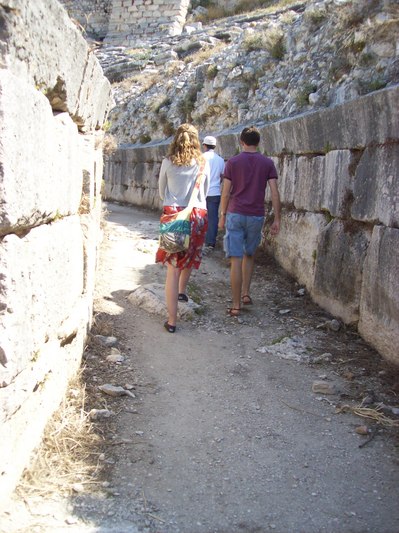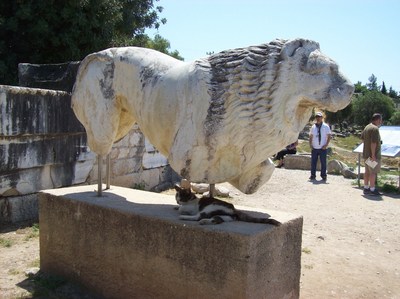Hello Followers of the GeoBlog,
I have been unable to load up the blog from my May trip to Turkey, so while everything is dated for today, it is all from roughly a month ago.
Thanks for reading!!!!
The site of Prianea is an entirely Hellenistic city located on the Emicale hill. It had a view of the Latmos Bay in ancient times with 2 harbors, outer and inner.The Boliterian is an entirely governmental theatre, and this one was rectangular with 4 entrances and a U-shaped pit, with a roof and columns covering the 600 people inside. Pine and Olive covered the colonnaded walkway, with the agora on both sides as it went up to the temple of Athena. The temple had 17 columns with Ionic capitals that Alexander the Great helped to rebuild after an earthquake. There were copies of the Altar of Zeus and the Statue of Athena here, as well as a temple to Demeter, where a pit for animal blood was. A synagogue and church stood next to the theatre, which is one of the best examples of Greek architecture in Asia Minor. There were 5 individual seats for religious members and a 5,000 person capacity. The Lade Battle was lost to the Persians here.
Miletus was a commercial and colonization center with a peninsula in the Latmos Bay and 2 harbors for trade and the navy. It had an agora, a harbor monument a caravan saray, and Turkish Baths, as well as a theatre. The theatre had 2 levels of seats and a vomitorium passageway. 4 columns represent the 4 most important people to the city. A wall of the Ottoman castle above is made from bits of the Theatre.
Didyhtaion (Didymus) had a Temple to Apollo where a spring was the center of the temple. It had 3 columns standing, only 1 original, and it was never completed. The Spring is supposed to be where Apollo met one of his various lovers, so the Temple was built around it. When it was not under the control of people who respected it, the spring did not appear. We saw a lot of animals here (turtle, cats, dogs), which seems to be a common theme in Turkey. 🙂 The Medusa heads on temples were to keep away evil spirits, and the ones here were pretty well preserved when compared to other statues and parts of temples we’ve seen.
Labranda was used by the Carions and controlled by a local Persian governor. It had 3 feasting halls (Androns),a treasury, and a temple to Zeus, who split the rock above it. It was excavated by the Swedes up to today. The Rock that was split there is said to have been split by lightning — hence it is an area sacred to Zeus. Feasting halls are rare in Greek architecture, so that is why the 3 here are so important to archaeology.
————————————————————————————————————————-
From what I (vaguely) remember of this day, it was one of our most tiring. It was so much fun though because of everything we learned in this one day.
Location: Bodrum, Turkey
Loading map...











We didn’t have Internet access at our hostel either. That and the really crazy Russian house mistress were the worst!